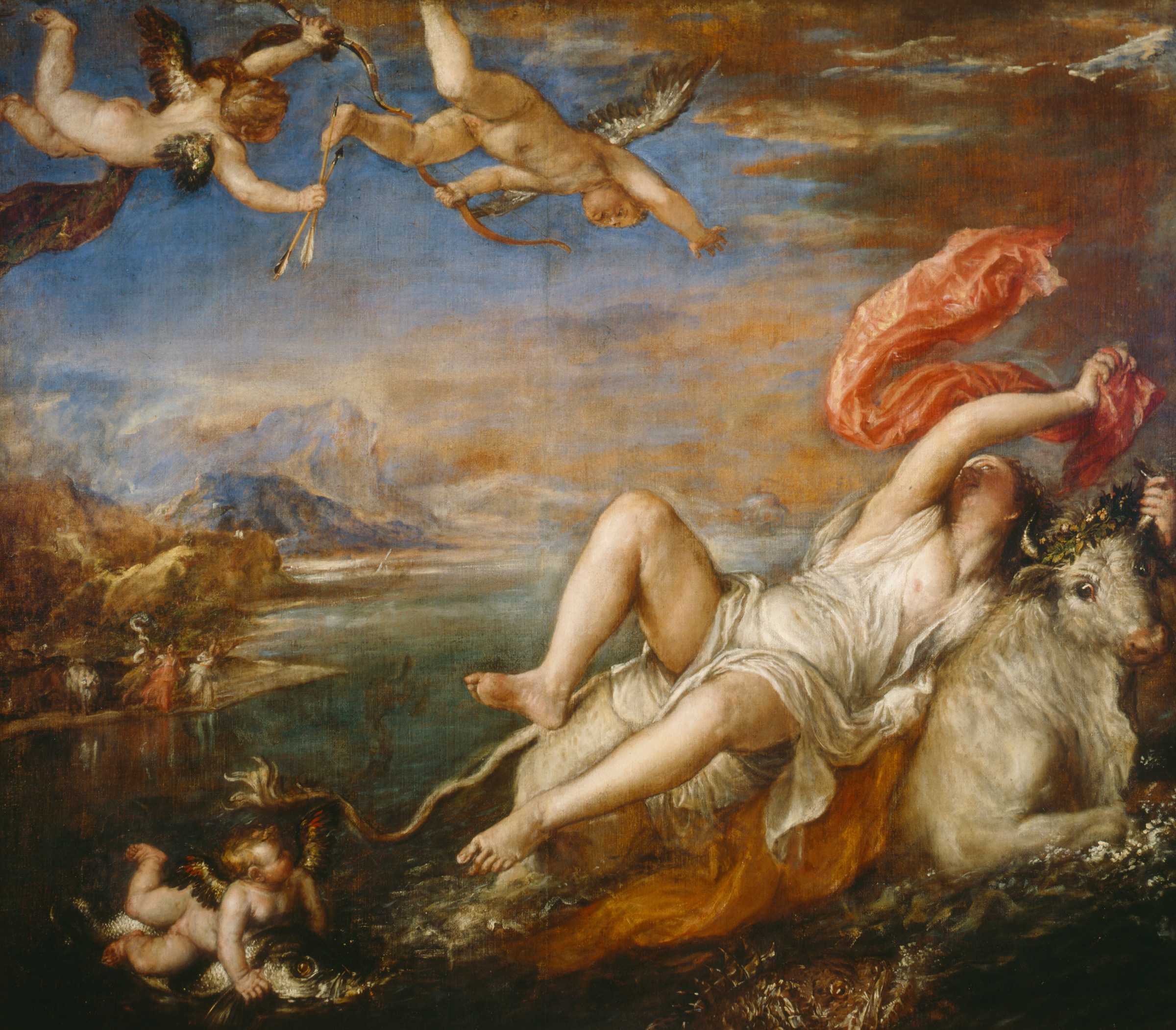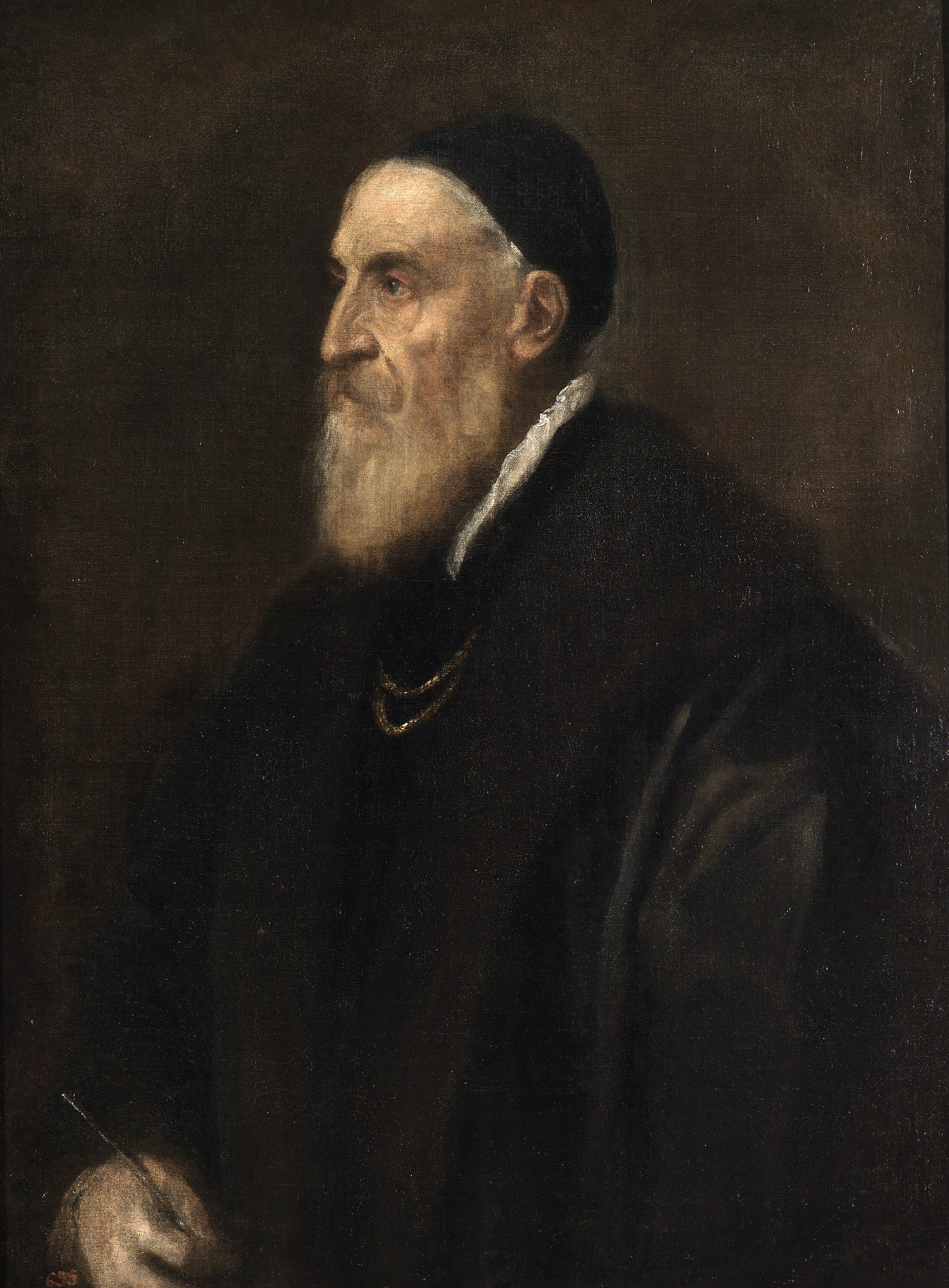Jupiter, the most powerful of the gods, is in love with the princess Europa. He has taken on the form of a beautiful white bull and with seemingly tame behavior induced the girl to climb upon his back. As soon as she does, the bull makes for the sea and bears the terrified Europa from her native Sidon to the island of Crete where he then consummates his passion. Titian is unequivocal about the fact that this is a scene of rape: Europa is sprawled helplessly on her back, her clothes in disarray. It may have been these features of the myth of Europa that led Titian to select the subject for the most powerful prince in Europe, Philip II of Spain, ruler of a vast empire which included the Netherlands as well as possessions in the New World and Asia. The king owned no less than thirty paintings by Titian. For the most part, these were religious pictures: Philip saw himself as a champion of the Roman Catholic faith, and he is often remembered as a militant and notorious promoter of its mounting campaign to re-establish its supremacy in the face of Protestantism. Yet Titian also painted mythological subjects for this most austerely Catholic of sovereigns. These “pagan” works, both in their depiction of fables of the ancient gods and in their markedly non-Christian character, were known as poesy because their subject matter derived from the works of classical poets such as Ovid. They are frankly sensuous and erotic, sometimes violent, and seem devised to highlight Titian’s virtuoso treatment of the naked female body in a variety of situations and in a range of different poses.




Europa
oil on canvas • 205 x 178 cm
 Titian
Titian